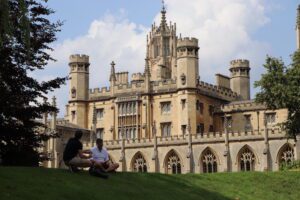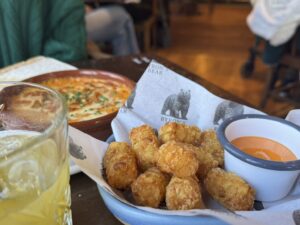We visited Cambridge Science Festival last weekend to find out more about some fascinating things in life – for example, how do robots work, and more importantly, what the science of ice cream is.
Our lecture called ‘The Sience of Ice Cream‘ started at 11.15am at the Department of Engineering, Cambridge University, where we got some educational information on ice cream while Cambridge University Students made some for all attendees – what a great idea! It was a lovely experince for all kids and adults, and we definitely got to learn a lot about this delicious dessert, which we’ll share in this blog post.

1. The first records of Ice Cream are from the 1700s
The word ‘ice cream’ first appeared in Oxford Dictionary in 1744

2. There are two assumptions on the origin of Ice Cream:
a, Ice cream came from Ancient Rome; b, It came from Mongolia

3. You can make ice cream without a freezer
This is due to addig NaCl (salt), which has a lower freezing point, so the temperature of the ice bath can get even colder, thus freezing the ice cream more quickly.

4. Ice cream is made of:
water (60%), lactose (5%), milk fat (10%), milk protein (10%), sugar (15%), emulsifiers, stabilisers and flavourings (0.5%)

5. What makes ice cream perfect?
It’s all about the texture – the perfect ice cream has to be smooth. Smoothness achieved by adding Liquid Nitrogen to the cream that chrashes ice crystals (ice cream with big ice crystals is hard and gritty).

6. You can’t eat ice cream at the top of the Himalayas
This is because of the air-bubble-dilemma. Lowering the pressure makes the airbubbles inside of the ice cream bigger, which makes the ice cream bigger until it completely melts.

Hope you enjoyed this blog post! If you want to visit Cambridge Science Festival, click here.
If you want to visit the College Backs with us, click here.




